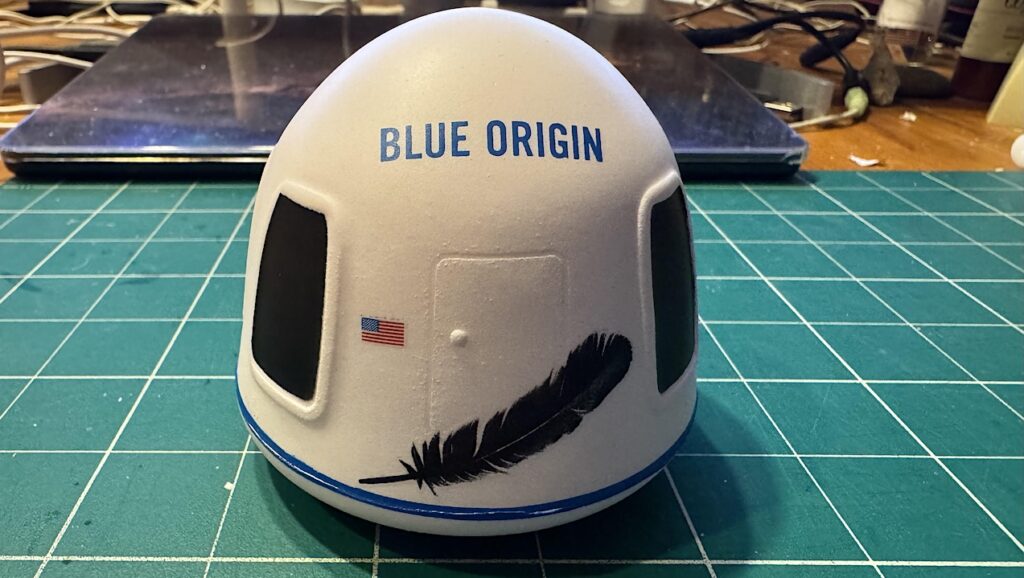FWIW NASA: These Are The Droids You Should Be Looking For
 Keith’s note: NASA is bringing its Robonaut unit back from the ISS to fix it. Meanwhile two of NASA’s R5 Valkyrie robots are being fixed by college students. Neither R5 or Robonaut can move from one point to another unless they are hung from cables or moved by humans. They come in at the bottom of the heap whenever they compete against other robots. Yet NASA continues to pour money into their JSC in-house robots while the private sector surges ahead – Boston Dynamics’ Atlas being one example.
Keith’s note: NASA is bringing its Robonaut unit back from the ISS to fix it. Meanwhile two of NASA’s R5 Valkyrie robots are being fixed by college students. Neither R5 or Robonaut can move from one point to another unless they are hung from cables or moved by humans. They come in at the bottom of the heap whenever they compete against other robots. Yet NASA continues to pour money into their JSC in-house robots while the private sector surges ahead – Boston Dynamics’ Atlas being one example.
Instead of proving that NASA does not know how to build a fully independent droid why not just put out a RFP to the private sector and let them provide the droids that NASA is looking for? At a minimum NASA should reveal how much money they have spent on their bots (including the shipping costs to/from ISS). They should also reveal the actual program plan for R5 and Robonaut – you know, what specific technological or programmatic needs are these things supposed to be meeting – and how well have they met those needs.
– Hey NASA: These Are The Droids You Should Be Looking For, earlier post
– Does NASA Have A Robot That Can Do This?, earlier post
– The Droid That NASA Should Be Sending To Mars, earlier post
– NASA Challenges People To Use Its Broken Robot To Fix Things on Mars, earlier post
– Using a Last Place Robot for NASA’s Robotics Challenge, earlier post
– NASA JSC Has Developed A Girl Robot in Secret (Revised With NASA Responses), earlier post









As others have noted, Boston Dynamics doesn’t build robots which are qualified for flight to or operations in space. In lots of cases, components like space-rated microprocessors lag a decade or so behind their terrestrial cousins in terms of capabilities. So, to be fair, we shouldn’t be comparing Robonaut or R5 Valkyrie to the Boston Dynamics robots. We should be comparing then to the sorts of robots people could built a decade ago. By that standard Robonaut and R5 Valkyrie are still, well, lacking.
Power consumption might be an issue as well, although I suppose they could just always be plugged into the ISS’s power supply the whole time. IIRC the first one of these required a couple kilowatts at least in power, not sure about the most recent ones.
Is it easier to put Atlas in a space suit for moon or mars or to continue with Valkyrie?
I was more concerned about radiation damage to the electronics. It might be better to ask, “Would it be easier to replace an Atlas every three months as its electronics frys?” The answer could well be yes, especially if launch costs go down dramatically.
Or use redundant but not radiation hardened electronics ad Dragon does, or a combination of redundancy and modular repacement,
Rather than making a space rated cpu (and other electronics) wouldn’t it be easier to shield the PCB’s as a whole by enclosing them in a radiation resistant case? This would impact mass of course, but you’re never going to get state of the art radiation resistant cpu’s from commercial companies – there is not enough of a market for them to invest in the technology
Probably. There are a number of options, and shielding is one of them. If the nature of the problem is transient (the energetic particle causes a bit to flip from 1 to 0 or 0 to 1) you can deal with it in software (constantly running error detection and correction software) and redundant processors with a voting system. If it’s permanent damage, shielding, redundancy and even margin can help. (One of the first results of damage is higher power consumption and longer rise and fall times on the signals, having power margin and clocking the parts down can handle that for a while.)
possibly for extremely high radiaiton environments such as the moon of Jupiter this would be the case, however a variety of standard terrestrial computers have been flown and utilized on ISS.
Another problem is the choice of an antropomorphic form. Boston Dynamics robots were specifically designed to duplicate human and animal gaits, but in zero-g it makes more sense to use thrusters and grippers, and there’s no need for a human head.
I really need to look up the details on what “standard terrestrial computers” means. Is that standard, but with MilSpec components replacing functionally identical, commercial ones? Or are they a bit older than what you could buy today? Sensitivity to radiation does depend on the small the traces are. Todays’s 10 nm technology is much more sensitive than the 45 nm technology of a decade ago. In a way, that means radiation hard electronics are being left behind. In the future, I expect to see more voting-system architectures with radiation soft processors, or similar soft but fault tolerant systems.
(And, for Jupiter, or at least anything closer than Ganymede, it’s not months. Even for 100 krad parts, it’s more like days unless they are shielded.)
The ISS Here’s a discussion of the SpaceX approach from a few years back:
http://aviationweek.com/blo…
It’s the difference between ~6 mSv/yr on the ground and ~80 mSv/yr on the ISS; a real difference but not necessarily of practical significance.
This point, I think, being emblematic for many of the ‘off the cuff’ comments made here by me, and by others, on incredibly dense subjects.
I wonder how humans find their way around that floor plan!
Part of this may be NIH, the other is probably the Pentagon problem -“we’ve put 10 Billion into this project and we just need another 200 million to finish, why quit now and waste the 10 Billion?”
Perhaps an alternative would be to hire Boston Dynamics and similar companies to consult with the NASA folks and try and combine their experience.
Ever feel like you are watching the birth of Skynet?